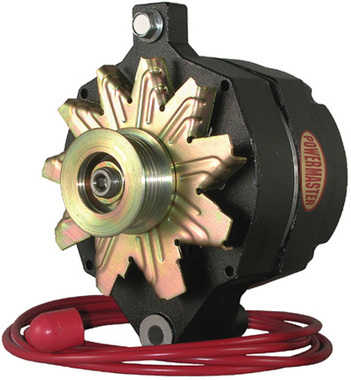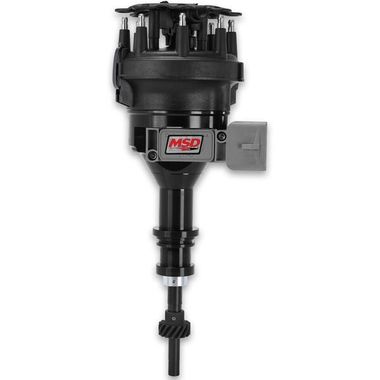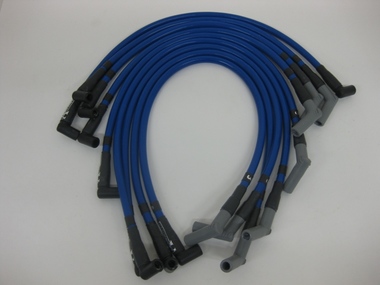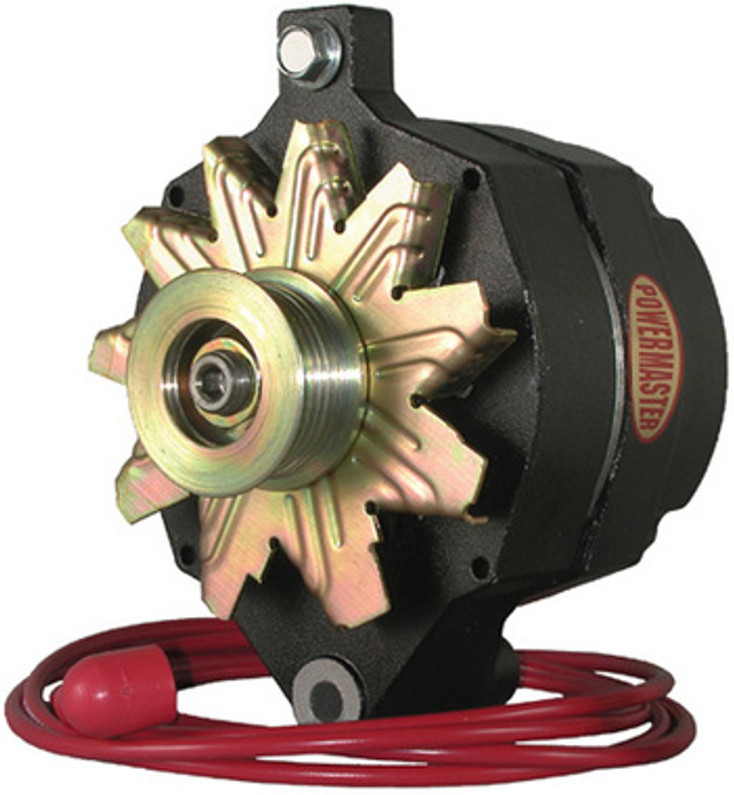Understanding Ignition Systems
For an internal combustion engine to work, it needs fuel, air and spark. Fuel and air get the most attention with cams, injectors, pumps and forced induction, but if your Mustang’s ignition system can’t keep up, you can’t get the most out of your engine. How do the components of this system work, and how can modifying them help your car live up to its full potential?
Alternators

The battery may start the car, but from there on, the electricity your car uses comes from the alternator, which converts engine power into 12-volt electricity using an AC generator with a rectifier.
The stock Fox body alternator is rated at 75 amps when it’s brand new. This is enough power for a mostly stock setup, but adding loads like electric cooling fans, fuel pumps, high power ignition systems and even modestly upgraded audio systems can easily outstrip this unit's ability to keep up with demand. This hampers power delivery to the spark plugs and the battery, leading to poor performance and stalling. Fortunately, Powermaster makes a 140 amp alternator that fits in the stock position and works with the 5.0's serpentine belt, making it easy to address power issues.
Ignition Controllers and Distributors

The spark plug needs to fire slightly before top dead center to get the fuel to ignite at just the right time to produce maximum power without detonating. The 5.0 uses a distributor to create a connection between the coil and the spark plug. The crankshaft spins a camshaft on the distributor that is connected to the rotor. As the rotor passes by a contact, the circuit is completed, sending power through the wire to the plug. By adjusting the distributor’s position, the timing can be altered to get the spark as close to TDC as possible without detonation.
For these systems, the weak point is usually the distributor shaft, which can shear under high stress. As the name implies, MSD’s Pro-Billet distributor replaces the shaft with a component milled from billet steel, while also upgrading the materials inside the distributor itself for lower friction and better power transfer.
Later V8s use a distributorless system that uses a controller connected to the crank position sensor and knock sensor. This lets it adjust timing automatically to fit driving conditions, keeping the spark firing exactly when it should. Modifications can easily outstrip the stock controller’s abilities, especially when a supercharger or turbocharger is added. An aftermarket controller allows for more precise control, more efficient transfer and wider advance variation to keep even highly modified engines running smooth.
Want to run a carburetor with a Mod motor? MSD's Mod 6 ignition controller takes the place of the ECU’s ignition functions, letting you keep the distributorless ignition while eliminating the fuel injection system.
Coils and Spark Plug Wires

A coil is a large capacitor that uses insulated copper windings to store electricity gathered from the electrical system then release it in a high voltage pulse to power the spark plugs. Distributor-based ignition systems use a single coil with spark plug wires leading to the plugs, while Ford went to multiple coil packs with wires and eventually coil-on-plug systems for later engines.
Removing resistance from this system increases the power of the spark for better ignition, increasing engine power and efficiency. Our Super 40 wires cut resistance down to just 40 ohms per foot, down from the 400-500 ohms of stock wires, while upgraded materials in MSD’s coils increase both voltage and power.
Spark Plugs
What makes a spark plug “hot” or “cold?” It has to do with the contact area the ceramic insulator has with the metal body of the plug. More contact increases heat transfer, making the plug colder. Using a hotter plug burns off deposits and keeps the electrode clean for optimum performance. However, modifications that increase power also increase combustion chamber temperatures, causing the plug to get so hot that it can ignite the fuel, leading to detonation. Colder plugs can transfer this heat away faster to keep this from happening.
What type of plugs do you need? While there are a few rules of thumb, such as going a range colder with every 80 hp added or every 10 degrees of ignition advance, the truth is that there are several factors at work making it hard to give a one-size-fits all solution.
Get Started Upgrading Your Mustang’s Ignition System with Anderson Ford Motorsport
Anderson Ford Motorsport has been in the Mustang tuning business since Fox bodies were still rolling off the assembly line, so we know what works for these cars. We don’t just sell ignition parts, we also manufacture components to meet the needs of high performance engines.
Recent Posts
-
Bringing the Fox Body Mustang into the 21st Century with Holley Terminator X
Anderson Ford Motorsport has been in the Fox Mustang performance industry since 1989. One of the bi …22nd Oct 2021 -
Roush Supercharger install on a 2019 Ford Mustang
Check out this 2019 Ford Mustang before and after we installed a Roush Supercharger. …21st Feb 2020 -
All Blower Installations are not Equal.
Why Should You Choose a Company to Install Your Blower That Has a Dyno Facility In-House?Are all de …24th Jan 2020


